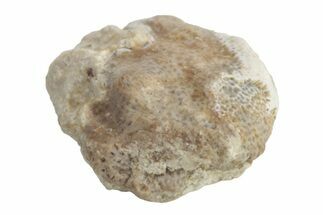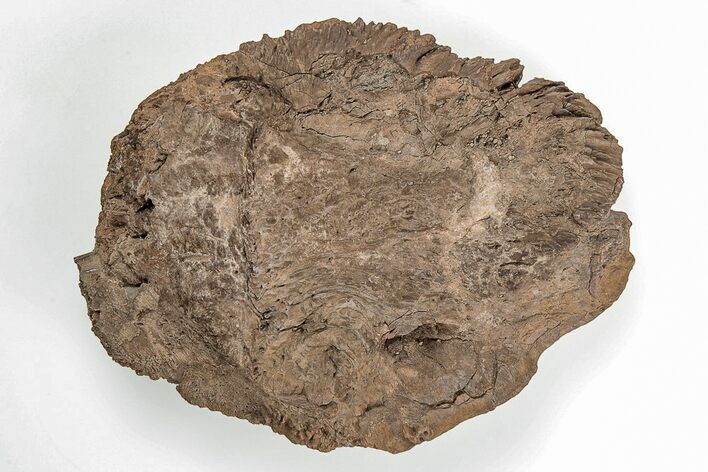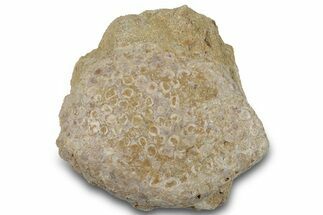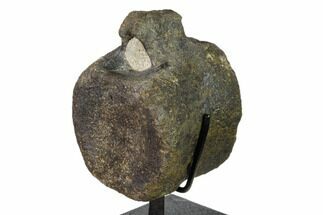This Specimen has been sold.
3.9" Xiphactinus Pre-Maxillary Bone - Kansas
This is an awe-inspiring, pre-maxillary bone from the "Terror fish of the Cretaceous seas", Xiphactinus audax. It was collected from the Late Cretaceous, Smoky Hill Chalk Member of the Niobrara Formation in Kansas. The pre-maxillary section of the jaw sits front and center on the upper jaw and contains three or more massive teeth. It is a really cool piece of the jaw that isn't often highlighted. The girth of this bone is astonishing.
It comes with an acrylic display stand.
Xiphactinus was a huge predatory fish that lived during the Late Cretaceous. It would have been a voracious predator, growing 15-20 feet long. When alive, the fish would have resembled a gargantuan fanged tarpon. It appeared in the BBC's Sea Monsters and National Geographic's Sea Monsters: A Prehistoric Adventure, and was labelled a "Prehistoric Terror" in the Animal Planet show River Monsters.
It comes with an acrylic display stand.
Xiphactinus was a huge predatory fish that lived during the Late Cretaceous. It would have been a voracious predator, growing 15-20 feet long. When alive, the fish would have resembled a gargantuan fanged tarpon. It appeared in the BBC's Sea Monsters and National Geographic's Sea Monsters: A Prehistoric Adventure, and was labelled a "Prehistoric Terror" in the Animal Planet show River Monsters.
The Smoky Hill Chalk Member of the Niobrara Chalk formation is a Cretaceous conservation Lagerstätte, or fossil-rich geological formation, known primarily for its exceptionally well-preserved marine reptiles. It outcrops in parts of northwest Kansas--its most famous localities for fossils--and in southeastern Nebraska. Large, well-known fossils excavated from the Smoky Hill Chalk include marine reptiles such as plesiosaurs, large bony fish such as Xiphactinus, mosasaurs, pterosaurs, and turtles.
SPECIES
Xiphactinus audax
LOCATION
Gove County, Kansas
FORMATION
Niobrara Formation
SIZE
3.9" long
CATEGORY
SUB CATEGORY
ITEM
#197681
We guarantee the authenticity of all of our specimens.
 Reviews
Reviews














